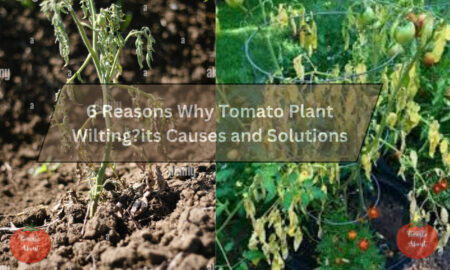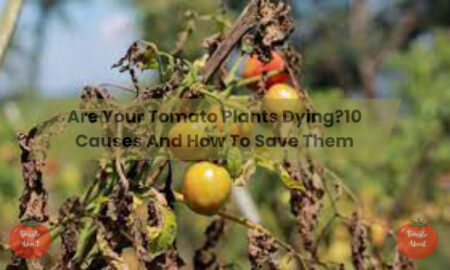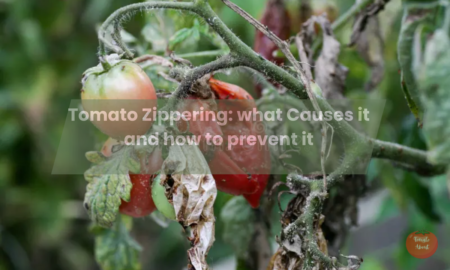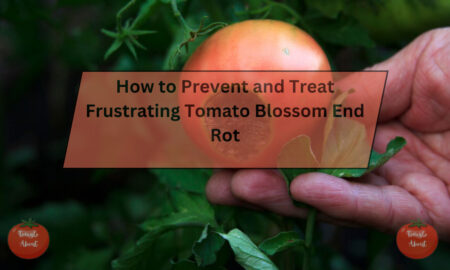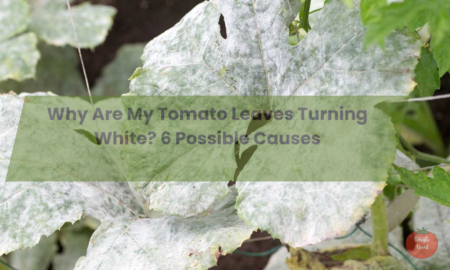As a gardener, there’s nothing more disheartening than seeing your lush, thriving tomato plants suddenly stripped bare, with nothing but a few skeletal stems remaining. If this scenario sounds all too familiar, you’ve likely encountered the dreaded tomato hornworm. These voracious pests can wreak havoc on your tomato crop, devouring leaves, stems, and even the precious fruits themselves.
But fear not! With a little knowledge and some proactive measures, you can protect your tomatoes from these hungry invaders.
What Are Tomato Hornworms?
Tomato hornworms are the larvae of the sphinx moth, a large, heavy-bodied moth that can be found throughout North America. These plump, green caterpillars can grow up to four inches long and are adorned with distinct white stripes along their sides and a curved horn-like protrusion on their rear end, giving them their iconic “hornworm” moniker.
While they may look intimidating, these caterpillars are harmless to humans and pets. However, their insatiable appetites can quickly turn your once-flourishing tomato plants into a mere shadow of their former glory. A single hornworm can consume an astonishing amount of foliage in a short period, leaving behind a trail of decimated plants and disappointed gardeners.
How to Identify Tomato Hornworm Damage?
Early detection is key to minimizing the damage caused by tomato hornworms. Here are some telltale signs to look out for:
- Defoliation: Hornworms can quickly strip tomato plants of their foliage, leaving behind bare stems and branches.
- Chewed Leaves and Fruits: Irregular holes or large sections of leaves and tomato fruits may be chewed away, revealing the hornworms’ voracious feeding habits.
- Frass (Droppings): Large, dark-colored droppings on or around the plants are often a clear indicator of hornworm presence.
It’s important to regularly inspect your tomato plants, especially the undersides of leaves, where hornworms like to hide during the day.
Damage Cause by Tomato hornworms
Speaking of damage, let’s take a moment to appreciate just how devastating a tomato hornworm infestation can be. These pests aren’t just casual grazers; they’re full-blown foliage annihilators.
Tomato hornworms have a voracious appetite that knows no bounds. They’ll start by methodically stripping your plants of their lush, green leaves, leaving behind gaping holes or mere stumps where once-thriving foliage stood. But that’s just the beginning.
Once they’ve had their fill of leaves, these insatiable caterpillars will move on to the stems, gradually working their way down to the precious tomatoes themselves. Before you know it, your once-bountiful crop is reduced to a sad, skeletal frame, with little to show for your efforts.
But the damage doesn’t stop there. Tomato hornworms also leave behind unsightly droppings, adding insult to injury as they decimate your plants. These telltale black droppings are often the first sign that something sinister is afoot in your garden.
Control and Prevention Methods
Now that we’ve explored the devastation caused by tomato hornworms, it’s time to arm ourselves with the knowledge and strategies to combat them. From organic solutions to more traditional methods, there are numerous approaches to consider.
1. Hand-picking
One of the simplest and most effective ways to control tomato hornworms is by hand-picking them off your plants. This method is best employed in the early morning or late evening when the caterpillars are most active and easier to spot.
As you carefully inspect your plants, keep an eye out for their telltale droppings, which can lead you straight to the culprits. Once you’ve located a hornworm, gently remove it from the plant and dispose of it (perhaps by feeding it to your backyard chickens or dropping it into a bucket of soapy water).
While hand-picking can be time-consuming, especially in larger gardens, it’s a satisfying and organic way to protect your tomato plants from these voracious pests.
2. Encouraging Natural Predators
Mother Nature has provided us with a powerful ally in the fight against tomato hornworms: their natural predators. By encouraging beneficial insects and birds to take up residence in your garden, you can enlist an army of pest controllers to help keep hornworm populations in check.
Attract birds like mockingbirds, bluebirds, and robins by installing birdhouses or planting native berry-producing shrubs. These feathered friends will happily feast on the hornworms, providing a natural form of pest control.
You can also welcome beneficial insects like wasps, lacewings, and predatory beetles by planting a diverse array of flowering plants and avoiding broad-spectrum pesticides that can harm these helpful critters.
3. Bacillus thuringiensis (Bt)
For those seeking a more targeted approach, Bacillus thuringiensis (Bt) is a bacterial insecticide that can be an effective weapon against tomato hornworms. Bt is a naturally occurring soil bacteria that produce proteins toxic to certain insects, including caterpillars like hornworms.
When applied to tomato plants, the Bt toxin disrupts the digestive system of hornworms, causing them to stop feeding and eventually die. However, it’s important to note that Bt is specific to caterpillars and does not harm beneficial insects like bees or ladybugs.
To maximize the effectiveness of Bt, it’s recommended to apply it in the early morning or late evening when caterpillars are most active. Reapply after heavy rain or according to the product’s instructions.
4. Neem Oil
Neem oil, derived from the neem tree, is a versatile and eco-friendly solution for controlling a variety of garden pests, including tomato hornworms. This natural oil works by disrupting the hormonal systems of insects, preventing them from feeding and ultimately leading to their demise.
To use neem oil effectively, thoroughly coat the leaves, stems, and undersides of your tomato plants. Reapply every seven to ten days or after heavy rainfall for optimal protection.
One of the advantages of using neem oil is its low toxicity to humans, pets, and beneficial insects, making it a safer option for organic gardeners.
5. Row Covers and Barriers
For those seeking a more preventative approach, using row covers or physical barriers can be an effective way to keep tomato hornworms at bay. These methods create a physical barrier between your tomato plants and the adult sphinx moths, preventing them from laying their eggs on your plants in the first place.
Row covers are lightweight fabrics that can be draped over your tomato plants, allowing sunlight, air, and water to pass through while keeping pests out. Just be sure to remove the covers during flowering to allow for pollination.
Alternatively, you can create a barrier around your tomato plants using materials like aluminum foil, sticky traps, or even a simple trench filled with a slippery substance like diatomaceous earth or vegetable oil. These barriers can deter adult moths from reaching their plants and laying their eggs.
6. Chemical Insecticides
While organic methods are often preferred, some gardeners may opt for chemical insecticides as a last resort if infestations are severe. Insecticides containing active ingredients like spinosad, pyrethrin, or carbaryl can be effective against tomato hornworms but should be used with caution and according to label instructions.
Remember, chemical insecticides can also harm beneficial insects and pollinators, so it’s crucial to weigh the risks and benefits carefully.
7. Soil Cultivation
Rototill your garden after harvest and again in early spring to kill overwintering hornworm pupae in the soil, reducing infestations by over 90%. Crop rotation also helps lessen the number of pupae that develop into egg-laying moths.
8. Companion Planting
Grow basil, borage, and marigolds near tomatoes to help repel hornworms with their strong scents. Basil may also improve tomato yield and flavor when planted together as a companion plant.
The bottomline
In the end, tomato hornworms can be really harmful pests for your tomato plants. Luckily, there are easy natural ways to control and prevent them. Handpicking the worms, using covers over your plants, attracting good insects, and spraying with safe products like Bt or neem oil all work well.
These methods don’t use harsh chemicals and also protect against other tomato plant threats. By using these simple natural approaches, even major hornworm invasions can be stopped so you get a great tomato harvest.


